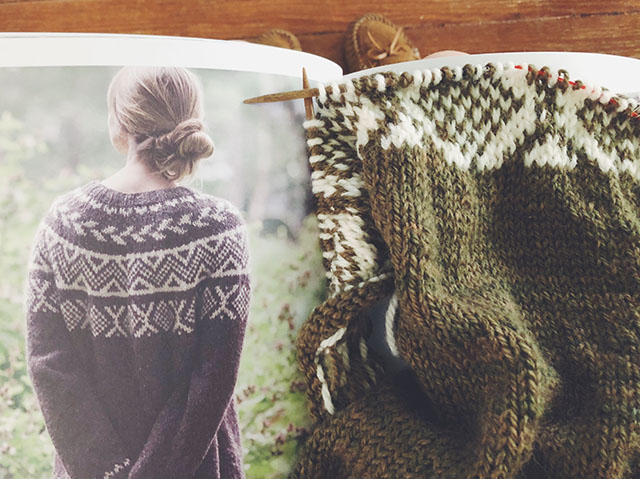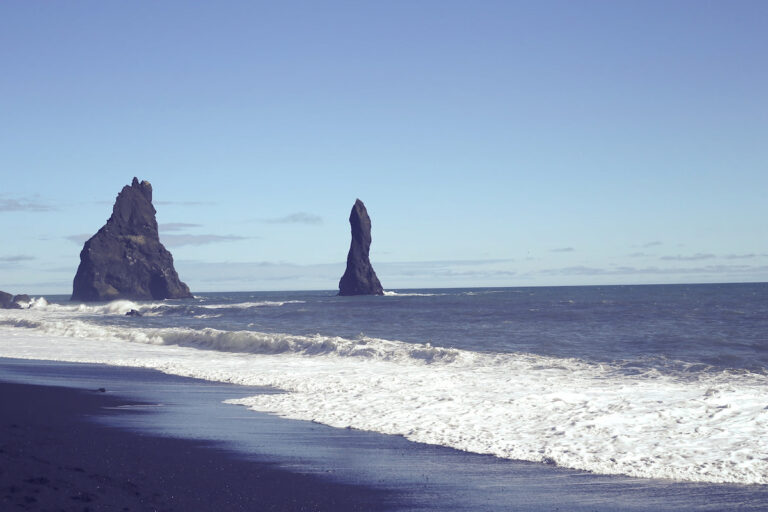The Mystery Knit-along and Thoughts on Walking My Block
How often do you walk your city block? I walk daily, multiple times, either blissfully in my own little world or looking harried while being dragged behind the hounds. It’s a commitment that is a constant challenge in my neighborhood. This KAL got me to try knitting while walking and though I probably won’t do that too often, it did translate to higher knitting volume while doing all sorts of other stuff like watching pots on the stove, sitting in a dark theatre, and stretching in front of the tv.
More than that, it added some oomph to my commitment to move more. It brought to mind my grandmother’s stories of her family parking downtown on a Sunday to people watch and walk around, as a social outlet. That is something so lacking in my town, other than one restaurant with a patio bar. I do see many more runners in the last ten years, but they have earbuds and don’t make eye contact. Maybe it’s us that we are in an awkward place between the community vibe of a big city and the natural beauty of a rural environment, which leaves with neither.
But first: The mystery of my Walk the Block MKAL Wrap, by Cassondra Rizzardi, is revealed: yes, it is very cool.
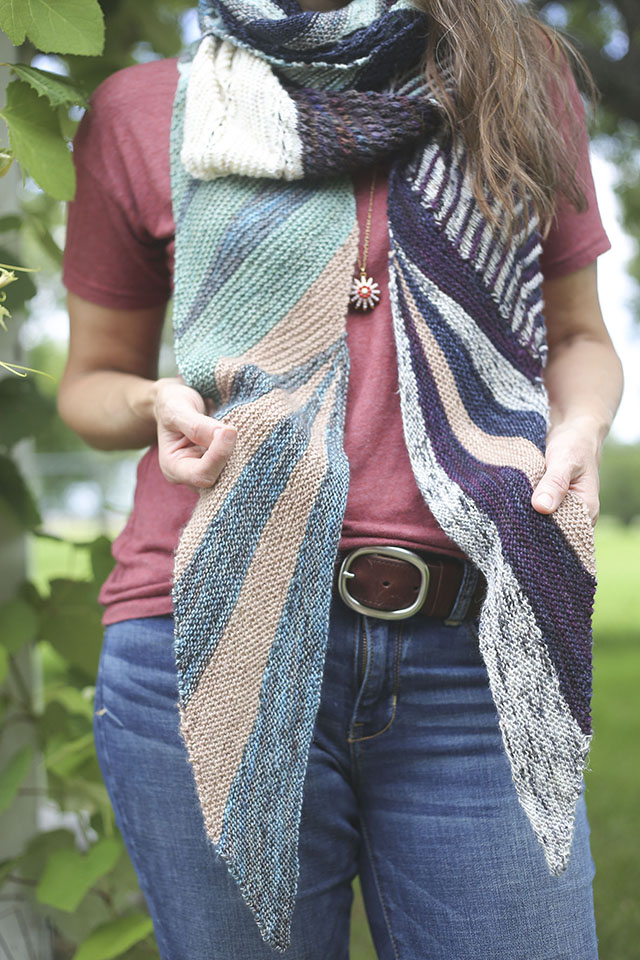
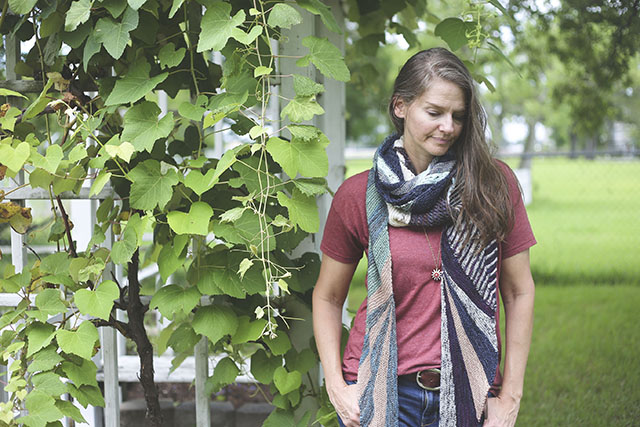
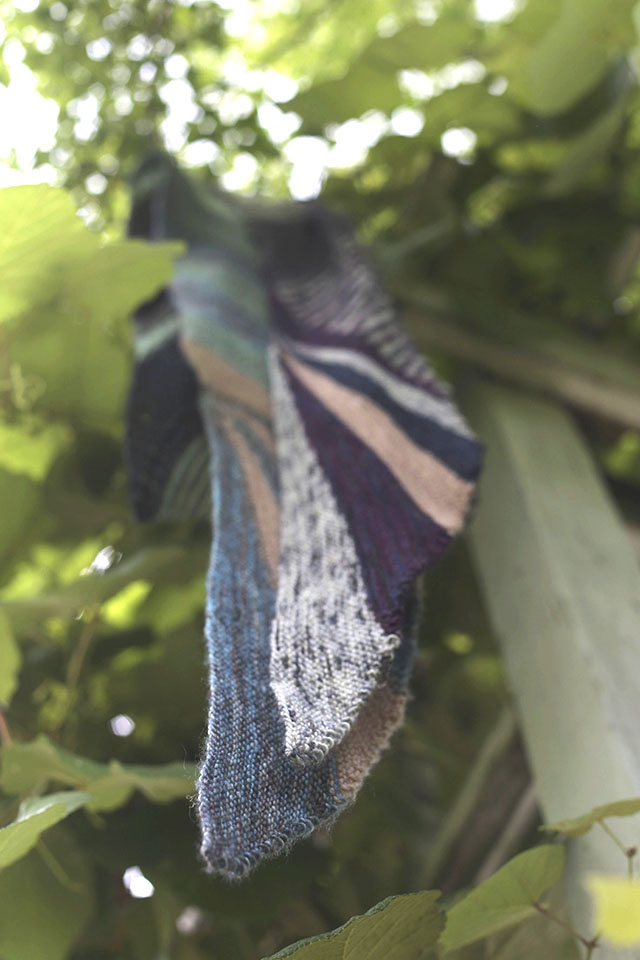
I didn’t have the time or spare cash to get the mini skein set from Six and Seven Fibers that was used for the sample knit. They were really great. I love Rachel’s color sense. I would happily buy all of her stuff if I could. However, I was relegated to my leftovers bag, which is actually pretty great. I found 12 little balls of yarn that looked good together. I tried to place them in line with the same sort of shared color relation as the mini set, though they are completely different colors. I just hoped they would compliment each other similarly. I laid them out in order from top to bottom, just like the skeins Cassondra laid out for the KAL. So when she picked skeins 8, 9, and 10 from her lineup, I did the same from mine. This added to the mystery of what shape each section would take. The only time I changed the order of yarns was when I went with a lighter shade yarn on the third from the last section to avoid having three very dark colors next to each other that obscured the cute pattern made by short row shaping.
The whole experience was very different for me. I’ve never done a MKAL and I have never used so many colors for a garment. It was a big question.
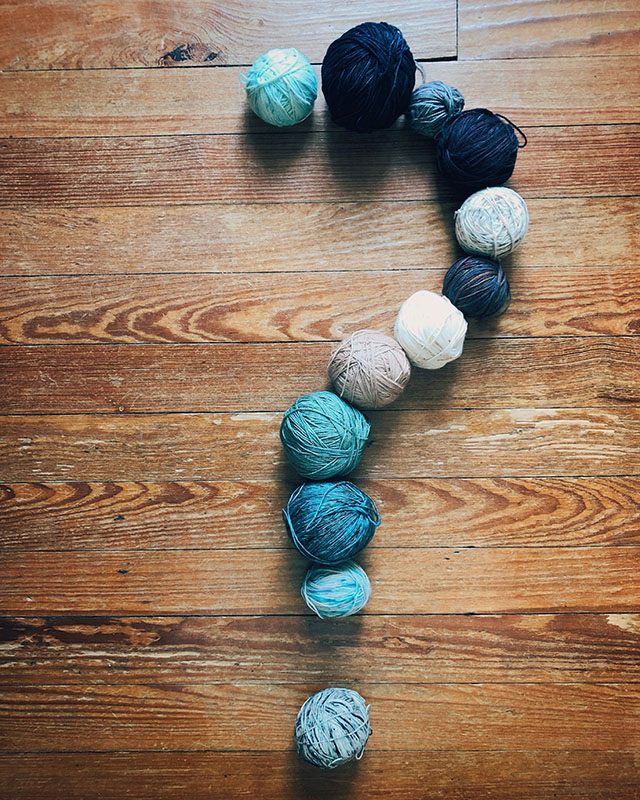
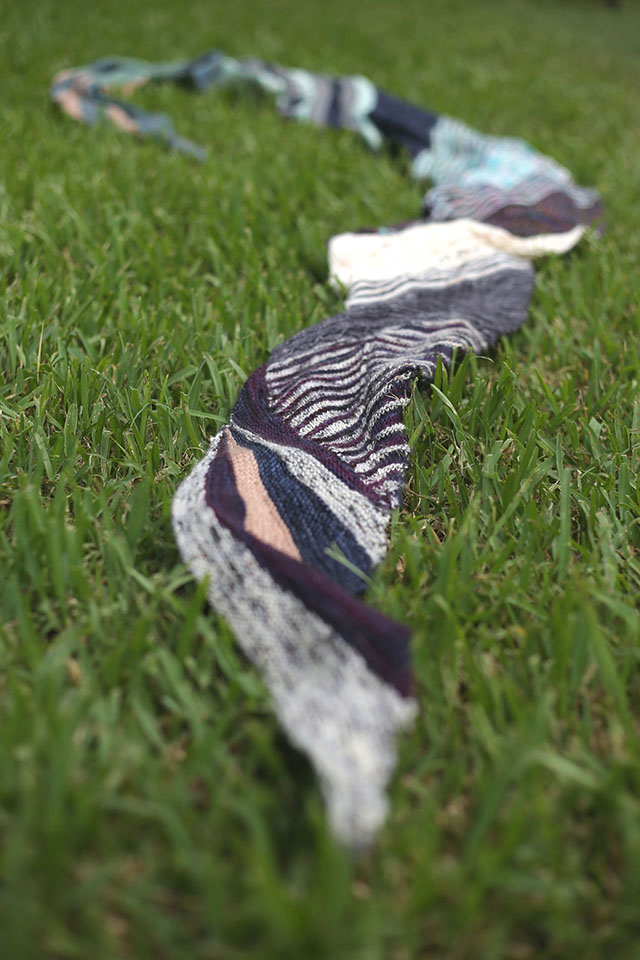
Details: I used US size 2 needles and 12 bits of leftover yarn whose names you can find on my Ravelry project page. I didn’t deviate from the pattern at all except to substitute a color I had used earlier for the third from last short row on the scarf for more contrast.
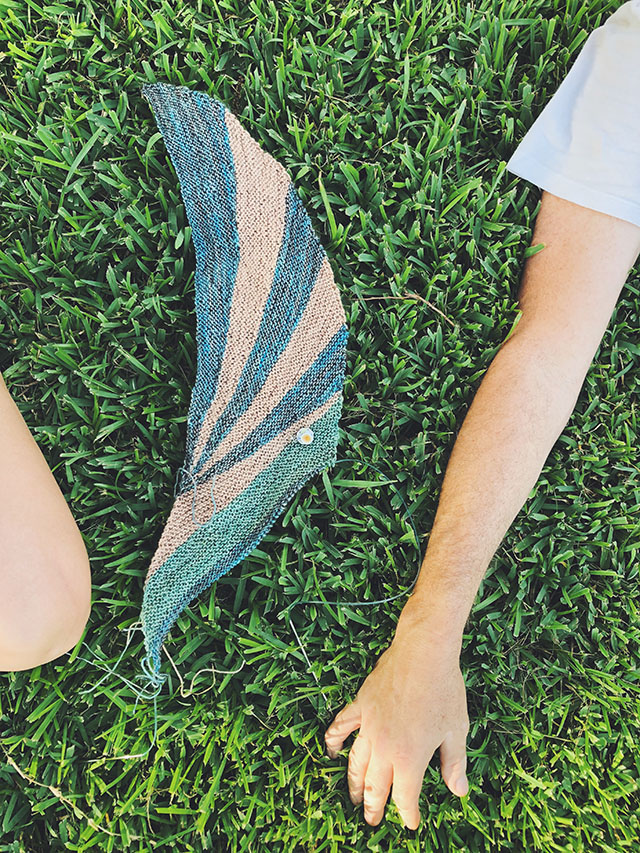
I knit a good bit of this scarf barefoot and outside. It was surprisingly easy to knit when distracted, even without looking. Cassondra was right: you can feel the short row turns and lace wraps and get accustomed to knitting without having to look down.
I have a queue a million miles long, but I wouldn’t mind making another one of these. I’d be interested to see what color combo I could come up with now that I know what the finished product will look like.
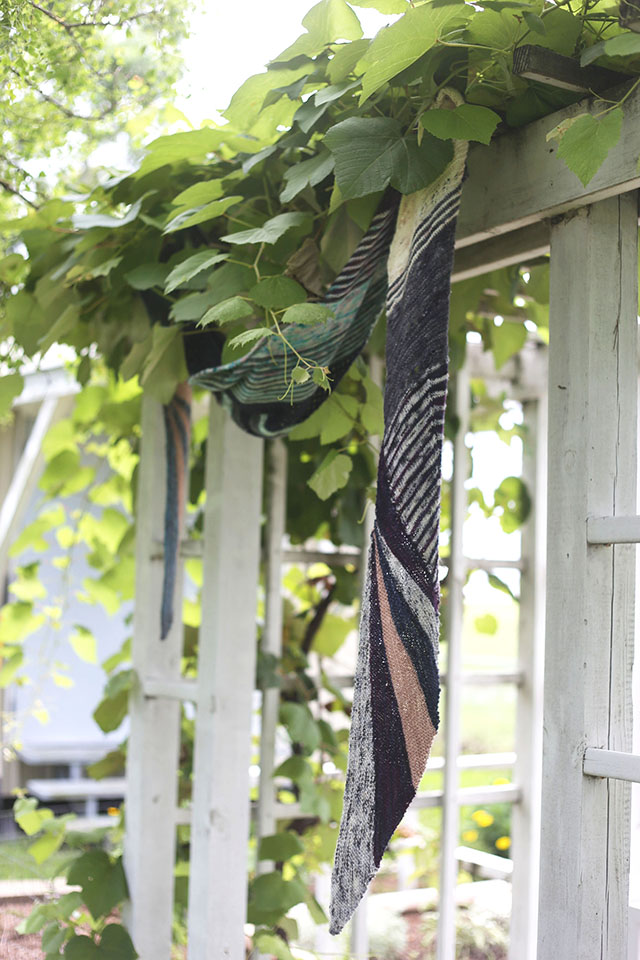
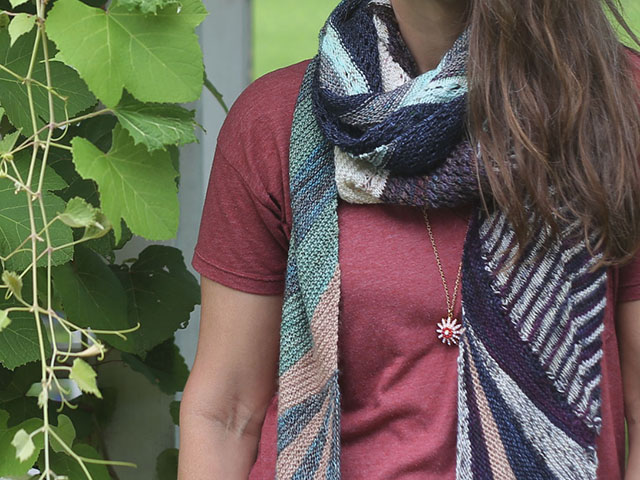
Back to the Jack Handey portion of this post. It’s connected because one of the points of the MKAL was to get out and move within our communities. THat’s something I’ve been thinking a lot about since reading Move Your DNA. A podcast viewer recently recommended we listen to a Ted Talk with Enrique Peñalosa about how his city, Bogotá, transitioned from mostly car traffic to using city buses in order to reflect a more democratic notion of transit equality. His goal was to see that the space and movement needs of each citizen were seen as equally valid. It got me thinking, and reading other things, about how the little amount of time we spend outside, has a lot to do with bending our lives to fit around transportation. I don’t even live in a true urban sprawl area. There is a grocery store, hardware store, school, doctor’s office, park, and church within the distance of a 15 minute bike ride from my house.

A short distance doesn’t necessarily mean a safe one, though. There are certain hours of the day that aren’t very safe for me to walk out of my little block. I have to use highways or roads where drivers speed and try to pass, when they shouldn’t, if I am to get anywhere. It is very unsafe at night and even during school pick up hours. Just yesterday I saw two cars narrowly avoid colliding on a sharp curve right next to where I had just been walking. Had it been a moment sooner, and had they crashed, I might have been hurt. This happens so often. If I am going to be outdoors, I have to be alert. Seriously, I have almost been hit more times than I can count and twice it was by a school bus- and only one time did the driver apologize. People do not expect pedestrians and even give angry gestures and glares, as if to say, “Quit hogging the road with your body width, you nut!” It seems that the streets are just for cars and loose dogs- the other bane of my existence.
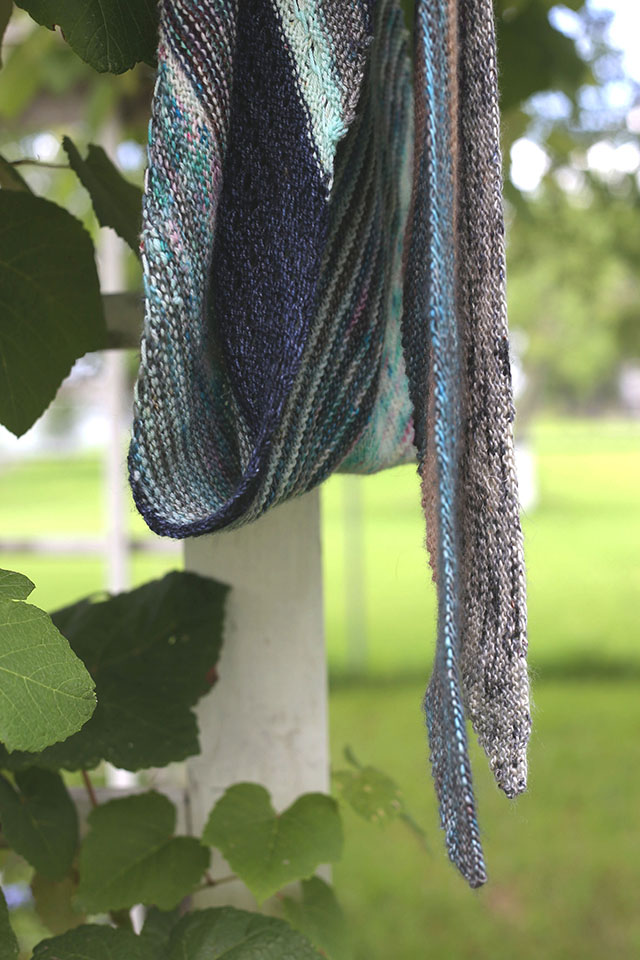
Of course, I can get behind Peñalosa’s ideas about green spaces and more streets designated as car- free. But I haven’t thought much about urban planning for the future, so his idea that an 80 passenger bus should be given eighty times the space of a single passenger car was interesting. In other words, he made a bus lane in his city and it encouraged less vehicle traffic while giving those who didn’t own a car the ability to travel without grid-lock. He also asserts that building and maintaining car-free roadways and regular roadways that have less car travel is much more affordable for a city than the usual highway and road repairs, another thing that has never been on my radar.
This led to another Ted Talk with Peter Calthorpe about city layouts that could be equally attractive to political, housing, and environmental interest groups, while being better for a community. They involve semi-high density neighborhoods with mixed, street-level shops that allow a person to get what they need within a walkable radius. He also emphasized costs, but goes into the savings per household and in agricultural resources, too. His ideas sounded great, but it is only a 14 minute talk and just a cursory search online landed me at this article that makes it seem more involved than that. Here’s another article on cities combatting urban sprawl, if you’re interested.
All of this is on the heels of considering the concepts of mobility justice and our failing health, due to sedentarism, which I’ve discussed some on Episodes 11-13. These concepts are the ones that have impacted me the most, though I only mention them here.
I don’t have strong conclusions to draw about all of these points. I have always leaned more towards a solitary cabin in the woods kind of life. We talk a lot about moving one day and cutting costs by living in a place where we definitely wouldn’t need multiple cars and, maybe, not even one. That’s even though my husband’s job is dependent on the auto industry. But I am planted where I am, at least for the next few years, so how can I be part of making my city more inviting, equitable, and healthy? If the opportunity ever came to move toward public transit or walking more, I’d take the bus.
I could also get more involved in city council meetings, though I shudder as I type that, to be a voice in favor of sidewalks, shade trees, and walking paths.
I have also made a commitment, now that I am not driving and sitting all the time out of necessity, to never return to a sedentary way of life. I’m trying to work lots of practical walking and movement into every day. It is a challenge in my neighborhood, but even if it is without destination, I am still going to do it. This really only helps me, but it is an example to my family, at least.
One last thing I can do to make a difference in the community aspect of my city is to make efforts to talk to people I see when I’m out. All kinds of people, unless they’ve got earbuds in and are in “the zone.” This is not something I could have easily done when I was younger and very shy. I want to make others feel at ease in my presence when waiting in a line or passing on the street in the evening. To linger a bit beyond, “How are you?” and, of course, to extend myself to everyone, equally. We can always be a bit more inviting. To this end, I am training my dogs (yes, still) so that it will be easier to take them out without too much ridiculous barking at everything with wheels and I carry the bopper (rolled up newspaper) in my pocket. Hmm, maybe that doesn’t look quite so inviting.
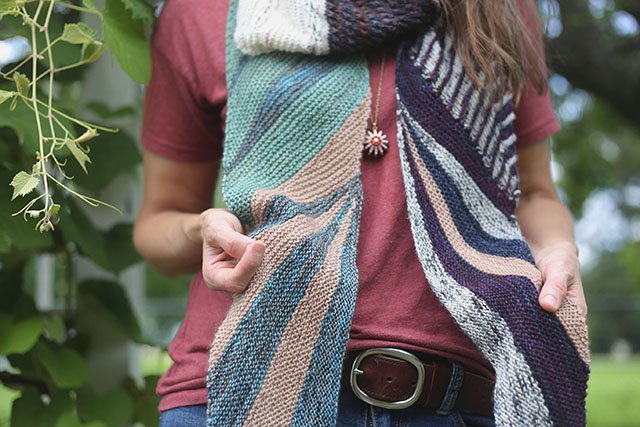
(more on Ravelry, Kollabora, Instagram, and Flickr)
How are you contributing to a healthy, equitable, sense of community in you town? Are you vocal in town hall meetings? Are you chatty? Give me ideas.
Another post on this wrap is here.
